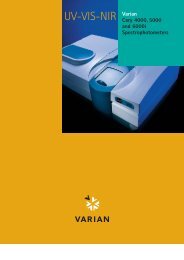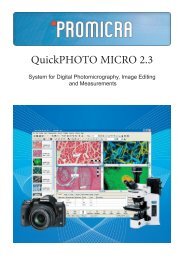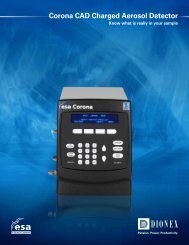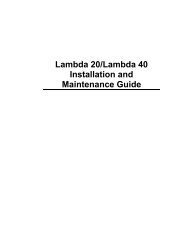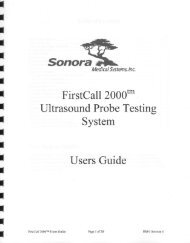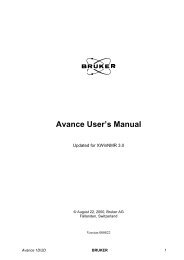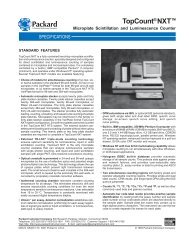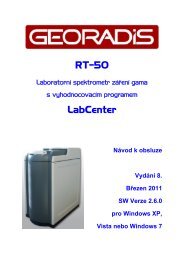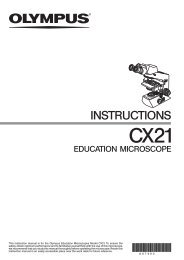HR-33T Dew Point Microvoltmeter Instruction/Service Manual ...
HR-33T Dew Point Microvoltmeter Instruction/Service Manual ...
HR-33T Dew Point Microvoltmeter Instruction/Service Manual ...
Create successful ePaper yourself
Turn your PDF publications into a flip-book with our unique Google optimized e-Paper software.
A v SET control. The numerical value of the reading on the 100 µvolt scale is the coolingcoefficient, A v , of the thermocouple being used. (See Section 4, Theory of Operation).3. If the thermocouple is in a sample chamber, insert the sample to be tested and allow sufficient time forthermal and vapor equilibration. If using a soil psychrometer or a similar sensor, allow time forequilibration after installation (Paragraph 3.2).4. With the RANGE switch set to the anticipated range and the FUNCTION switch on READ, bring themeter reading to zero by adjusting the ZERO OFFSET control.5. Rotate the FUNCTION switch to COOL long enough to ensure that water has condensed on thejunction. Cooling times required will vary from 5 seconds or less for very wet samples to 30 secondsor more for dry samples. Once the necessary cooling time has been determined for a given waterpotential range and sample type, this time should be used for all measurements within that range,including calibration measurements.6. The temperature of the thermocouple will fall below the dew point temperature during COOL(assuming the sample is within the measurement range). When switched to DEW POINT, thetemperature will converge to the dew point. The e.m.f. produced by the temperature difference betweenthe junction at the dew point temperature and the ambient temperature is a linear function of the waterpotential. The proportionality constant is approximately -0.75 µvolts bar -1 . Within the normal rangeof temperatures encountered in water potential measurements, little, if any, correction for ambienttemperature is required. However, it is necessary to maintain the proper A v setting, as explained inParagraph 3.5.2.2 – Psychrometric ModeThe psychrometric mode does not require the determination or setting of A v . To use the <strong>HR</strong>-<strong>33T</strong> in thepsychrometric mode, follow the procedure outlined in Paragraph 2.1 through step 5, omitting step 2. After coolingthe junction (step 5), rotate the FUNCTION switch to READ. The meter will indicate a “plateau” signal beforefalling to zero. The proportionality constant for psychrometric determination of water potential is approximately-0.47 µvolts bar -1 . The microvolt output divided by this number can be used for rough approximations of waterpotential. The temperature correction given below must be used if the temperature is different from 25/C. Moreaccurate measurements can be obtained by individually calibrating each psychrometer.A correction for the temperature of the thermocouple can be made using the relationship:where T is in degrees Celsius.CORRECTED READING = READING / (0.325 + 0.027T)2.3 – Combined <strong>Dew</strong> <strong>Point</strong> and Psychrometric ModeCombined dew point and psychrometric measurement is sometimes useful. This can be accomplished by switchingthe FUNCTION switch from DEW POINT to READ upon completion of the dew point measurement. The plateaushould be identical to the plateau obtained using the psychrometric mode for the same cooling time. If the plateauis wider, then water has been added to the thermocouple during the dew point measurement period. If the plateauis narrower, then water has evaporated during the dew point measurement period. A strip chart recorder shouldbe employed for this evaluation.The combined mode permits A v to be experimentally determined under wet thermocouple conditions. The valueof A v must be adjusted until the duration of the plateau is the same as in psychrometric measurement. In readjustingA v , remember that increasing the A v setting decreases the cooling of the thermocouple which willdecrease the width of the plateau.7



